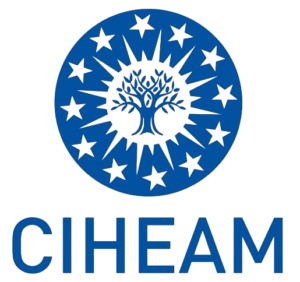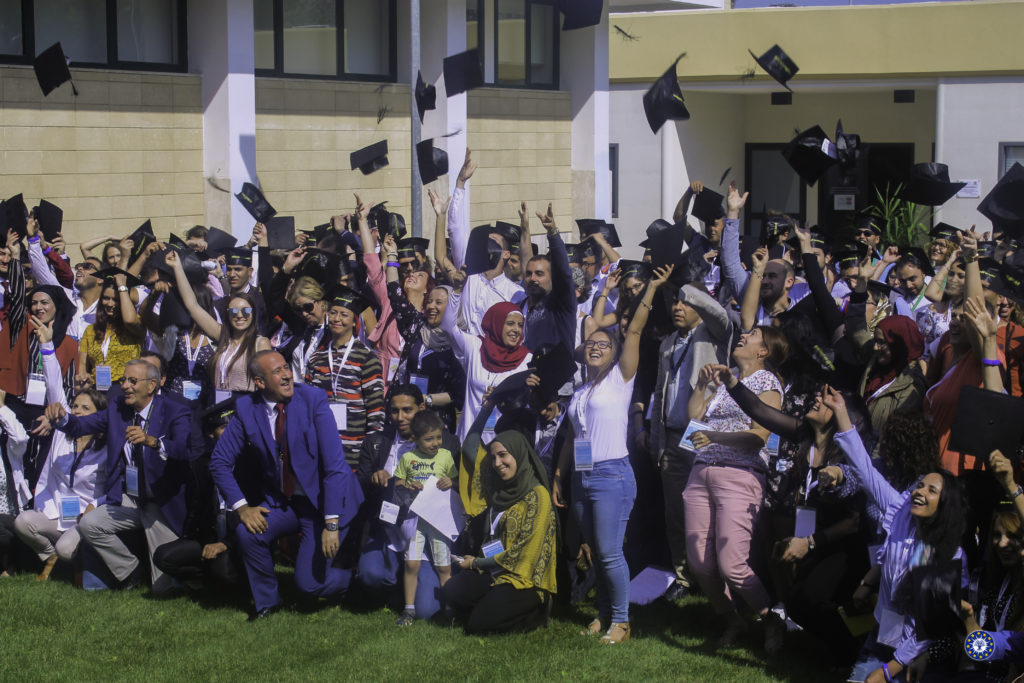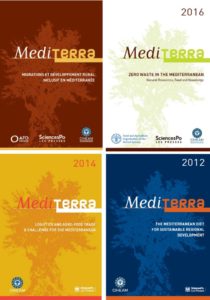Online courses : a good way to maintain academic activities for CIHEAM students during the lockdown
This article is part of a longer article about How the CIHEAM has used new technologies of information and communication during the pandemic of COVID-19.
At CIHEAM Chania, Master’s courses carried on online during the pandemic of COVID-19. The online platform used for Master’s courses is a professional version of Zoom with a monthly fee while two more platforms were used as trial, namely e-Presence & Jitsi. Examinations were replaced with assignments, presentations and oral exams. Besides, lecturers are evaluated by the students and it will be interesting to see their feedback during this long-distance learning period in order to improve the experience for both sides.

At CIHEAM Zaragoza, at the beginning of the State of Alarm in Spain, both MSc program had 3 months of activities remaining. In addition, many of our students went back home to different countries. We decided to continue our activities as normally as possible and to use a combination of different apps and software to resume our activities, but this time, online. Lectures continued with live online streaming using YouTube, as it was a simple method to teach to several lecturers with a wide variety of computer skills. For students it is a well-known system able to work regardless the internet quality of the user. Interaction Lecturer/Student took place via chat. Moodle is a free learning management tool with several options and was also used to continue our activities. In our case we are using Moodle as a method to deliver and receive assignment and provide lectures material. In addition, Moodle is used to perform exams and surveys. Finally, communication with students is done frequently via Google Meet and WhatsApp.
At CIHEAM Bari, since the early breakout of the pandemic of COVID-19, didactic activities as well as the attendance of training and its related research actions (classroom, laboratory, field) were suspended for about one month until technical possibility of carrying out distance learning was provided (from mid-April). In the meantime, the educational services have always been guaranteed and continuous virtual support and health monitoring have been provided to the resident students, also via WhatsApp informal groups. Despite initial technical difficulties registered for simultaneous internet connection access, online lectures have been carried out successfully for all Master’s courses (with platform Zoom – CIHEAM Bari license: live lessons with possibility of registration). Zoom platform has revealed the best IT tool for interaction with students. For the entire duration of didactic activities suspension, tutors and education team have operated in close coordination with the professors to implement distance learning modules for the three Master’s programmes, taking into consideration the specific needs of students. Until mid-June, CIHEAM Bari ensured the delivery of training courses, the follow-up of projects activities and the performance of evaluation tests. Moreover, all students successfully passed their final exams online.
Focus : “How I became a YouTuber by accident” (or the use of digital platforms as a tool for online lectures), by Andrés SCHLAGETER from CIHEAM Zaragoza
A couple of months ago the term “YouTuber” was associated to teenagers playing videogames and funny viral videos. If someone had told me in January that by the end of April I’d become a YouTuber I’d have said “no way”, but as Forest Gump said “Life is like a box of chocolates. You never know what you’re gonna get.” But it turns out that by March 2020 the world was affected by one of the most dangerous diseases in the last centuries, COVID-19. Governments forbade all group activities that could spread the disease, including presential lectures. That forced many professionals involved in the education business to find new educational tools. Reorganizing a course from “conventional” to “online” presents a lot of issues, one of the most important challenges being to find new methods to give lectures. Although there are many different systems for organizing online lectures (Zoom, Skype, Google meet, WebEx, YouTube, among others) it’s important to know which system adapts better to your needs and budget. In my case, I needed a system to cater for 30 students spread over several countries with unknown internet connection quality. Because I rely on several invited speakers, the system needed to be simple to use and teach; and in terms of budget the closer to zero the better. The budget factor reduced several of my options. Although, many apps have free options, they tend to work with limited features (limited time or number of people allowed). That is why I decided to use a free streaming system (YouTube). These free streaming systems are well-known and use a simple broadcasting method. They can adjust image quality according to the internet quality available, enabling lectures to be streamed regardless of connection quality. Another interesting YouTube feature includes the automatic generation and translation of subtitles which is useful when professors and students come from a wide variety of countries. Automatic subtitle translation is not perfect but is good enough for students to understand most of the lecture even in an unfamiliar language. On the negative side, these platforms have often limited options in terms of interactivity and you need to use external apps (Virtual Studios) to transform it into an interactive platform. Another negative point on using YouTube is that lecturer/student interaction takes place via chat. This limits communication between participants and a moderator is needed to compile and select questions for the lecturer. In summary, the decision to use YouTube or another system will depend mostly on your needs as an educator.












